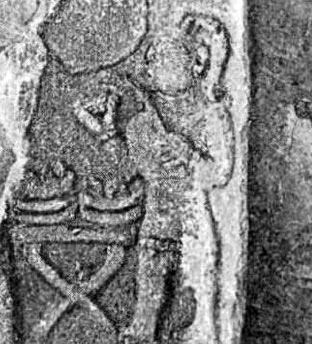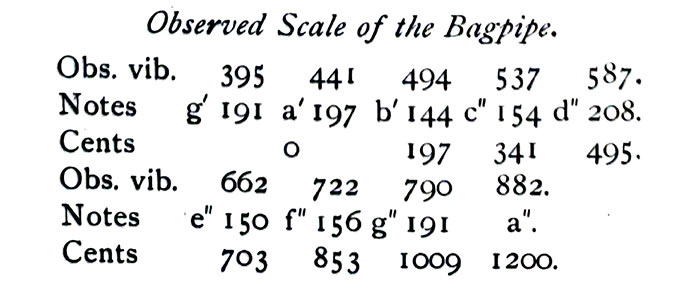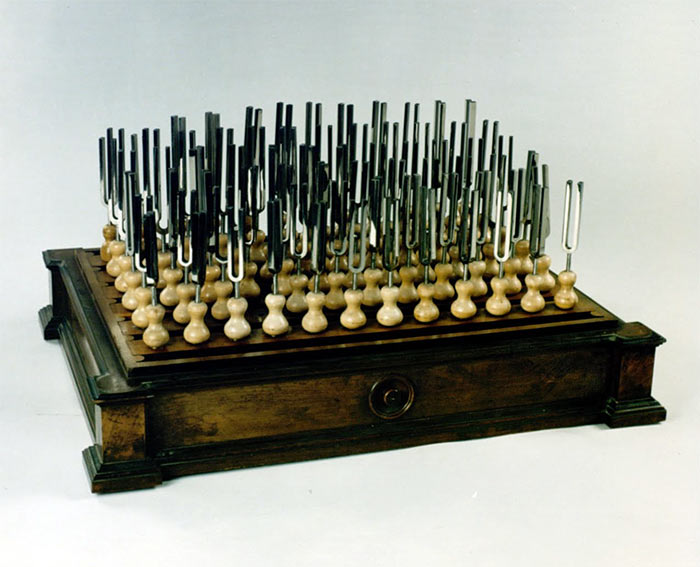
In an appendix to Layard’s book on Charles Keene there are notes on experiments into the pipe scale for which Keene loaned his pipes.
This research and subsequent lecture by Dr AJ Ellis, assisted by Mr AJ Hipkins, ‘On the Musical Scales of Various Nations’, was reported in the the Journal of the Society of Arts, March 27 1885.

By Francis Chamberlain
‘The Highland Bagpipe. It will seem strange to introduce this instrument among the Arabian; but the bagpipe is found sculptured at Ninevah. It was possibly brought to Europe during the Crusades…
(From Grattan Flood’s ’Story of the Bagpipe’: ‘Assyria had its form of bagpipe, as is evident from a still remaining sculpture on a monument, and so also had Ninevah. Nebuchadnezzar….. employed a band of musicians, including pipers. I have previously pointed out that the so-called ‘dulcimer’ mentioned in the third book of Daniel as one of the instruments in Nebuchadnezzar’s band, was in reality a bagpipe.’)
‘The bagpipe was possibly brought to Europe during the Crusades…
‘The Highland bagpipe has at present only nine notes…Now it is generally said that from g’ to a’ [low G to low A] is not quite a tone, and that c” and f” are not c” and f” sharp of ordinary notation [in the key of A] but in each case some intermediate sound, the consequence being that the bagpipe cannot play with any other instrument in a band, and two or more bagpipes can only play in unison.
‘To determine what this scale really was, Mr C Keene, the well-known artist of ‘Punch’ who is a performer on the bagpipes, kindly brought his instrument to my house and played through the scale while Mr Hipkins determined the pitch by my forks. The following was the result:

‘The first line gives the number of vibrations, the second line gives the name of the notes and the interval in cents between them, the third line gives the intervals in cents from the lowest a’, omitting the low g’ which is repeated in the octave as g” [high G].
‘This scale took us by surprise and we immediately wrote to Mr Glen the great bagpipe seller to make inquiry. He informed us that the scale, as regards regular intervals, has never been altered and, “If the chanter you played on is one of McDonald’s [Donald MacDonald] or our own, it was no doubt correct.”
‘Our opinion is that if a chanter was made perfect in any one scale it would not go well with the drones. Also there could not be nearly so much music produced (if you take into consideration that it has only nine invariable notes), as at present it adapts itself to the keys of A major, D major, B minor, G major, E minor and A minor. Of course we do not mean that it has all the intervals necessary toform scales in all those keys, but we find it playing tunes in one or other of them.’
Earlier, in the Proceedings of the Royal Society, No 234, 1884, this research by Ellis and Hipkins was also mentioned stating….’The Crusaders brought the Syrian bagpipe to England, and after it had passed out of fashion in England it became the national instrument of the Highlands of Scotland.
‘Such an instrument, made by MacDonald of Edinburgh, was obligingly lent us by Mr Charles Keene, the well-known artist.’
Of the experiments Mr Hipkins writes: ‘The fifth of August 1884 I find, was the evening Keene and I dined with Ellis and had the bagpipe trial.

‘This trial was made with a Scheibler tonometer of tuning forks *, comprised in an octave and tuned about four vibrations a second from each other. The said tonometer is now in the South Kensington Science Museum.’
- Wikipedia: Johann Heinrich Scheibler (11 November 1777 – 20 January 1837) was a silk manufacturer from Crefeld, Prussia, without a scientific background, who went on to make contributions to the science of acoustics as a self taught musicologist. He made a ‘tonometer’ from 56 tuning forks as an instrument for accurately measuring pitch by counting beating, described in 1834, ‘A wooden board…together with a small wooden mallet with which the forks are to be struck, and a good metronome, constitute Scheibler’s tuning apparatus.’
- Read the first excerpt from Layard’s book here. There are three in total. Use the PP Search facility to read excerpts 2 & 3.



















